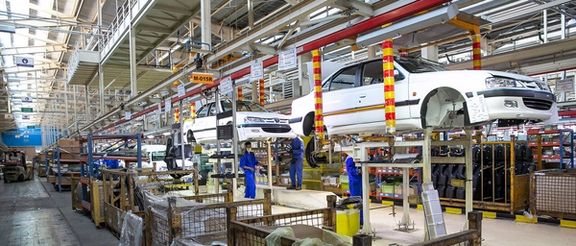Iran's currency plunge signals deeper trouble for struggling economy

Iran’s currency, the rial, has plunged near historic lows as the threat of direct confrontation with Israel looms, raising concerns about soaring inflation and adding pressure on the government to manage its economic challenges.
On Thursday, October 17, the rial briefly traded at 640,000 per US dollar, down from 590,000 in August, before Israel began its punishing attacks on Iran’s proxy, the Lebanese Hezbollah, and eventually killing its leader, Hassan Nasrallah. This led to an Iranian retaliation with ballistic missiles on October 1. Since then, Iran has been expecting a retaliatory strike by Israel.
With inflation hovering around 40% over the past five years, the government has little room to maneuver on economic issues, compounded by a massive budget deficit. US sanctions imposed in 2018 have significantly cut Iran's oil export revenues, which typically account for about half of the government’s budget.
This year, the government faces a budget deficit exceeding $14 billion according to the minister of economy, out of a total budget of roughly $40 billion. One way to deal with the deficit is to raise income, however, despite maximizing oil exports to its sole buyer, China, revenues are falling 26% short of estimates. Another source of income would be taxes, but the government has already increased taxes last year and it cannot raise more revenue in this way while the economy remains stagnant.
Another likely solution is to borrow more funds from the central bank, but that would mean printing more money, which will fuel higher inflation. The extensive borrowing in recent years has resulted in a staggering liquidity level of 83,540 trillion rials (approximately $139 billion), which has doubled since 2021. This surge in liquidity has contributed to an annual inflation rate exceeding 40% in recent years.
Reducing expenditures could help lower the budget deficit, but it's a difficult task in a state-controlled economy where the private sector has largely vanished from major industries. Loss-making government factories and companies rely heavily on state financing and subsidies to stay afloat. Without this support, they would be forced to close, further exacerbating unemployment in an already high-inflation environment.
Corruption among government insiders is also a heavy burden, woven into the fabric of the political and economic system. Former officials and pundits who are allowed to speak raise the alarm, but the ruling system is unable to make fundamental changes without democratic accountability.
The government's biggest financial burden comes from direct and indirect subsidies, which are politically risky to eliminate. Gasoline is sold for under 10 US cents per gallon, with similarly low rates for electricity and natural gas. These subsidies cost the state about $60 billion annually. However, when the government last raised gasoline prices in 2019, it triggered widespread unrest and protests. The authorities responded with military-level force, resulting in the deaths of around 1,500 protesters.
Experts have proposed more rationality in budget planning and the gradual elimination of subsidies, but the system is running on its own inertia, unable to make the necessary reforms.
Ultimately, Iran’s foreign policy and its controversial nuclear program, which have triggered crippling international sanctions, have further destabilized the already struggling state-controlled economy. The most immediate threat is the rapidly falling currency, leading to swift inflationary pressures and potential political instability.